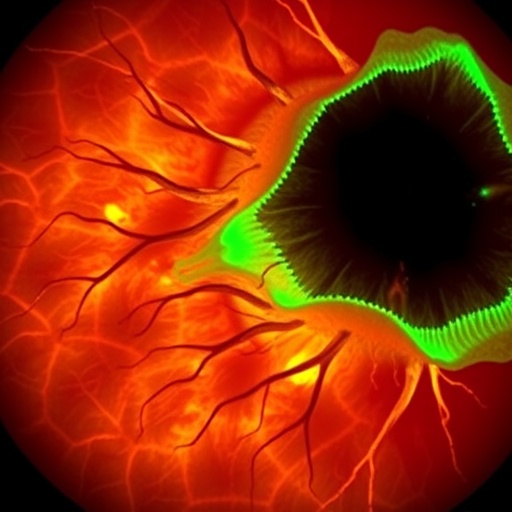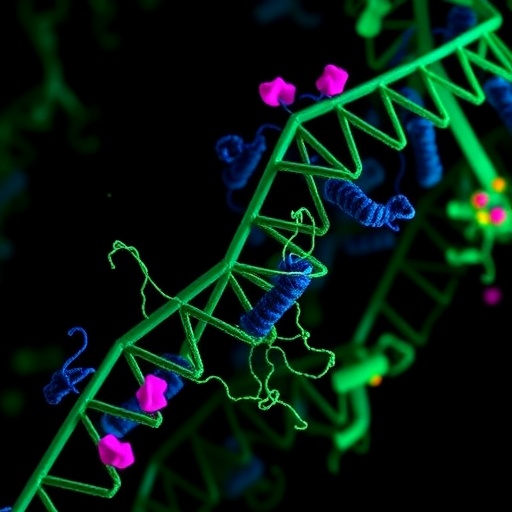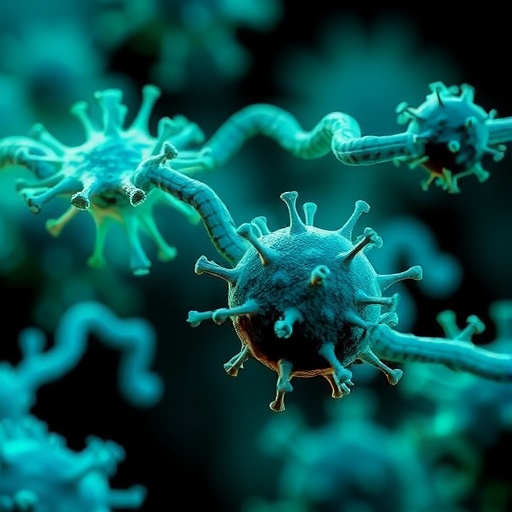In a groundbreaking advancement poised to revolutionize cancer therapy, a team of researchers has unveiled a self-driven electrical triggering system that activates tunneling nanotube highways, significantly enhancing drug delivery efficacy in bladder cancer treatment. This innovative approach, reported in the prestigious journal Nature Communications, addresses one of the most persistent challenges in oncology: efficient and targeted delivery of chemotherapeutic agents to malignant cells while minimizing systemic toxicity.
Bladder cancer is notorious for its high recurrence rates and resistance to conventional therapies, largely due to the barriers that limit effective drug penetration into tumor tissues. Central to this novel therapeutic strategy is the manipulation of tunneling nanotubes (TNTs)—ultrafine, membranous conduits that facilitate direct intercellular communication and cargo exchange. Until now, the practical exploitation of TNTs for drug delivery has remained elusive, hindered by a lack of control over their formation and activity.
The researchers engineered an electrical triggering mechanism that autonomously senses the tumor microenvironment’s unique electrical properties and, in response, activates the formation and function of TNT networks among cancer cells. This activation enables enhanced transport of chemotherapeutic drugs along these nanotube pathways, effectively creating “highways” that funnel therapeutic agents precisely where they are most needed. This bioelectrical feedback loop represents a paradigm shift in how cellular structures can be harnessed for medical intervention.
The underlying technology leverages the intrinsic bioelectric signals present in cancerous tissues, employing them as natural triggers to initiate the assembly of TNTs. The system’s self-driven nature means it requires no external electrical input, thus simplifying integration into clinical protocols and reducing the risk of off-target effects. Detailed mechanistic studies revealed that localized changes in membrane potential and ionic fluxes encourage cells to extend nanotube projections, which then dynamically interlink the tumor mass.
One of the most compelling aspects of this discovery is the system’s selectivity and scalability. By fine-tuning the electrical parameters responsive to bladder cancer cells, the researchers ensured that healthy tissues remain largely unaffected, limiting collateral damage often observed with systemic chemotherapy. Furthermore, the modularity of the approach suggests potential adaptability across various cancer types characterized by distinct electrical signatures, thereby broadening its clinical relevance.
In vitro experiments demonstrated that administering chemotherapeutic agents in conjunction with the electrical triggering system achieved markedly increased intracellular drug concentrations. This amplification of drug delivery was reflected in enhanced cytotoxicity against bladder cancer cell lines, surpassing the effects of standard treatment regimens. Notably, subsequent in vivo studies in murine models mirrored these results, showing significant tumor regression without escalating systemic toxicity.
The system’s design incorporates biocompatible materials capable of interfacing seamlessly with biological tissues, ensuring minimal immune activation or adverse responses. Researchers utilized microfabricated electrodes embedded within biodegradable scaffolds to monitor and respond to the localized electrical milieu, facilitating precise temporal and spatial control over TNT activation. This marriage of materials science and cellular biophysics exemplifies the interdisciplinary nature of contemporary cancer research.
Perhaps the most striking implication of this technology lies in its potential to overcome multidrug resistance, a major hurdle in effective cancer management. By leveraging TNT networks to shuttle drugs directly into resistant cancer cells, the therapy circumvents typical efflux mechanisms and intracellular sequestration that diminish chemotherapeutic efficacy. This targeted approach could markedly improve patient outcomes and reduce the dosages needed, mitigating side effects.
The study also examined the kinetic dynamics of TNT formation and drug transport, revealing that the electrical triggering not only accelerates the initiation of nanotubes but also enhances their stability and cargo capacity. These properties are crucial for maintaining sustained delivery over therapeutic windows, ensuring consistent drug exposure within tumor microenvironments that are often heterogeneous and difficult to penetrate.
Importantly, the research team addressed potential safety concerns, performing longitudinal analyses to ascertain whether prolonged activation of TNT networks could inadvertently facilitate metastatic spread or intercellular transfer of oncogenic material. Encouragingly, no evidence suggested that TNT activation promoted adverse cellular behaviors, alleviating fears about unintended consequences of this intervention.
The implications for personalized medicine are profound. By integrating real-time bioelectrical monitoring capabilities, treatment regimens could be dynamically adjusted based on individual tumor responses, allowing for bespoke therapies that adapt over the course of disease progression. This would represent a significant leap forward from the static dosing schedules currently prevalent in oncology.
This discovery also sparks new avenues for research into the role of bioelectricity in cancer biology. The ability to manipulate electrical signaling pathways to modulate cell behavior not only opens therapeutic possibilities but may also deepen scientific understanding of tumorigenesis and microenvironmental interactions. Such insights could inform future strategies for early detection and intervention.
While challenges remain in translating this innovative system from bench to bedside—including scaling manufacturing processes, ensuring regulatory compliance, and conducting large-scale clinical trials—the foundational science offers a promising path forward. Collaborative efforts between bioengineers, oncologists, and materials scientists will be vital to harnessing the full potential of tunneling nanotube activation in clinical oncology.
In conclusion, the introduction of a self-driven electrical triggering system to activate TNT highways represents a transformative leap in bladder cancer treatment. By capitalizing on the tumor’s intrinsic bioelectric landscape to promote efficient drug transport, this method promises to enhance therapeutic efficacy while reducing systemic toxicity. As the technology moves closer to clinical application, it heralds a future where cancer therapy is not only more effective but also more intelligent, adaptive, and targeted.
Subject of Research: Bladder cancer therapy and targeted drug delivery mechanisms.
Article Title: Self-driven electrical triggering system activates tunneling nanotube highways to enhance drug delivery in bladder cancer therapy.
Article References:
Liu, Z., Joshi, R., Zhou, Z. et al. Self-driven electrical triggering system activates tunneling nanotube highways to enhance drug delivery in bladder cancer therapy. Nat Commun 16, 10093 (2025). https://doi.org/10.1038/s41467-025-65017-2
Image Credits: AI Generated
DOI: https://doi.org/10.1038/s41467-025-65017-2
Tags: bioelectrical feedback in cancer therapybladder cancer treatment innovationselectrical triggering mechanisms in oncologyenhancing drug efficacy in cancer therapyintercellular communication in tumorsminimizing systemic toxicity in cancer treatmentNature Communications research findingsnovel approaches to drug resistancerevolutionary cancer therapy advancementsself-driven drug delivery systemstargeted chemotherapy strategiestunneling nanotube technology





